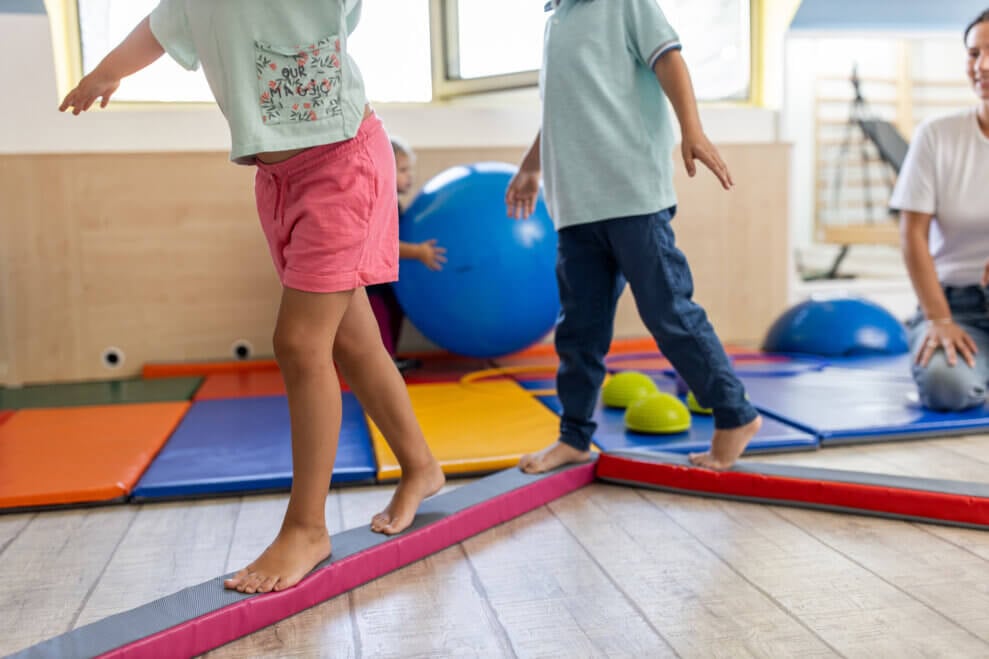
Why gymnastics is the best foundation for physical literacy
When it comes to introducing your child to programmed activity, just about any quality programming is good.
You can register your six-year-old in soccer or dance, or hockey or tennis, or a host of other activities, and if the programs are well-run, they’ll be fun and help your child develop fundamental movement skills.
But if you could only register your child for one activity, what would help the most?
To get the best foundation in all-round physical literacy during the early elementary years, gymnastics would probably be number one.
Gymnastics develops the ABCs
When it comes to developing physical literacy and fundamental movement skills, children need a good grounding in the ABCs of physical literacy. The ABCs are agility, balance, coordination, and speed, and good gymnastics programs develop all of them.
Agility is the ability to adjust our body position quickly in space, changing direction and accelerating or decelerating through a complex combination of balance, coordination, and speed.
Balance is about maintaining your body’s centre of gravity—whether you’re standing on two feet, one foot, or your hands (static balance), or hopping through a hopscotch court, walking on ice, or running over uneven ground (dynamic balance).
Coordination means the orchestrated movement of different parts of the body to generate more sophisticated movements such as walking, running, jumping, and throwing.
Speed, in physical literacy, refers to how quickly you can move your body, or parts of your body, when doing specific movements—such as how fast you can move your arms when throwing, or how quickly you can jump and move your feet when skipping rope.
For developing these four ABCs, alongside fundamental movement skills, nothing beats introductory non-competitive gymnastics.

Gymnastics promotes physical development
Gymnastics involves a variety of activities where children learn to balance, jump, swing, climb, tumble, and more. All these activities improve coordination, strength, and flexibility, which help to support other physical activities and reduce the risk of injury.
Due to the vigorous character of most of these activities, gymnastics also develops cardiovascular health as it promotes improved blood flow and oxygenation of the body.
Gymnastics enhances mental and emotional development
Gymnastics has important mental benefits for children. Execution of the various movement skills requires concentration, focus, and discipline, which helps improve cognitive abilities. Gymnastics requires that children learn how to listen, follow instructions, and pay attention to details, which are complementary skills that they can use in school.
Gymnastics also helps children learn how to manage their emotions and cope with stress. They learn how to deal with failure and setbacks, which helps build resilience and emotional strength.
Gymnastics supports social development
Gymnastics is based mostly on individual activities, but children are still learning and practicing alongside others. As they learn how to take turns and share equipment, they learn skills in communication and cooperation, which are important for developing healthy relationships in general.
As children develop and master different gymnastics skills, they also develop confidence and positive self-esteem through their sense of personal accomplishment. This confidence contributes to their overall well-being and improves their chances for success in many different areas of their lives.
Gymnastics does it all
In short, gymnastics is an excellent physical activity for all-round childhood development. It promotes physical, mental, social, and emotional development, which are all essential for a child’s overall well-being. This is why the early elementary years are a great time to register your child for introductory gymnastics.
Good introductory programs don’t require your child to compete, and it isn’t necessary for them to have Olympic ambitions. The best early gymnastics programs are simply about having fun while developing physical literacy and a firm mind-body connection.






Hello Would like to ask what activities suits for my 2 yrs old son? Thank you will appreciate your response.
Hi there! This page has a whole list of articles that you can click on to get ideas on what to do with a two-year old! Have fun! activeforlife.com/activ…-toddlers/